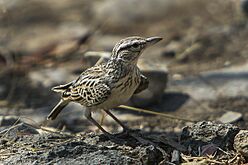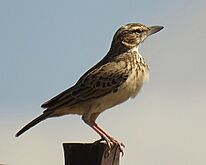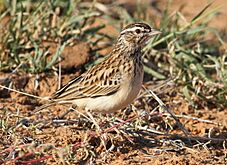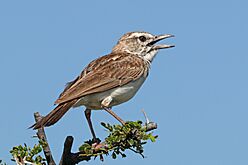Sabota lark facts for kids
Quick facts for kids Sabota lark |
|
|---|---|
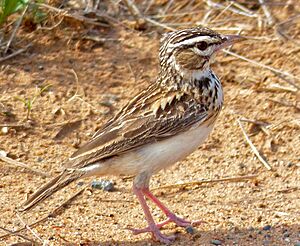 |
|
| Conservation status | |
| Scientific classification | |
| Genus: |
Calendulauda
|
| Species: |
sabota
|
| Subspecies | |
|
See text |
|
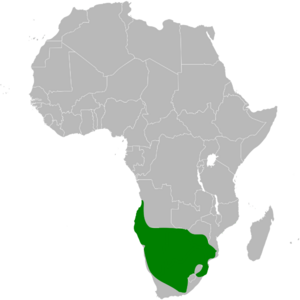 |
|
| range | |
| Synonyms | |
|
|
The sabota lark (Calendulauda sabota) is a small bird found in southern Africa. It is a type of lark, known for its songs. These birds live in dry areas like savannahs and shrublands. They usually stay in one place. However, they might move around if their home gets too dry. The name "sabota" comes from the Tswana word sebotha, which means lark.
How Scientists Classify the Sabota Lark
Scientists group living things to understand them better. This is called taxonomy. The Sabota lark used to be in a group called Mirafra. But in 2009, scientists moved it to a new group, Calendulauda. Not all scientists agree with this change. However, it is the most common way to classify it now.
There are two main types of Sabota larks. One is called the large-billed Sabota lark. The other is the small-billed Sabota lark. The large-billed larks live in dry western and southern parts of their range. The small-billed larks live in the wetter woodlands of the north and east.
Different Types of Sabota Larks
Scientists recognize nine different types, or subspecies, of the Sabota lark:
- Congo Sabota lark (C. s. plebeja) - First described by Jean Cabanis in 1875. It is found on the coast of Cabinda in north-western Angola.
- Benguella Sabota lark (C. s. ansorgei) - Described by William Lutley Sclater in 1926. It lives in western Angola.
- Bradfield's lark (C. s. naevia) - Described by Hugh Edwin Strickland in 1853. This type has a larger bill than other Sabota larks. It is found in north-western Namibia. This subspecies is named after South African naturalist R. D. Bradfield.
- Ovampo Sabota lark (C. s. waibeli) - Described by Hermann Grote in 1922. It lives in northern Namibia and northern Botswana.
- C. s. herero - Described by Austin Roberts in 1936. It is found in southern and eastern Namibia, and north-western South Africa.
- C. s. sabota - Described by Andrew Smith in 1836. This type lives in eastern Botswana, central Zimbabwe, and north-eastern South Africa.
- C. s. sabotoides - Described by Roberts in 1932. It is found in central and southern Botswana, western Zimbabwe, and northern South Africa.
- C. s. suffusca - Described by Phillip Clancey in 1958. It lives in south-eastern Zimbabwe, southern Mozambique, and eastern South Africa.
- C. s. bradfieldi - Described by Roberts in 1928. This type is found in central South Africa.
Gallery
-
C. s. herero in Etosha National Park, Namibia
(large-billed) -
C. s. bradfieldi near Ritchie, N. Cape
(large-billed) -
C. s. sabotoides at Mapungubwe, Limpopo
(small-billed)



